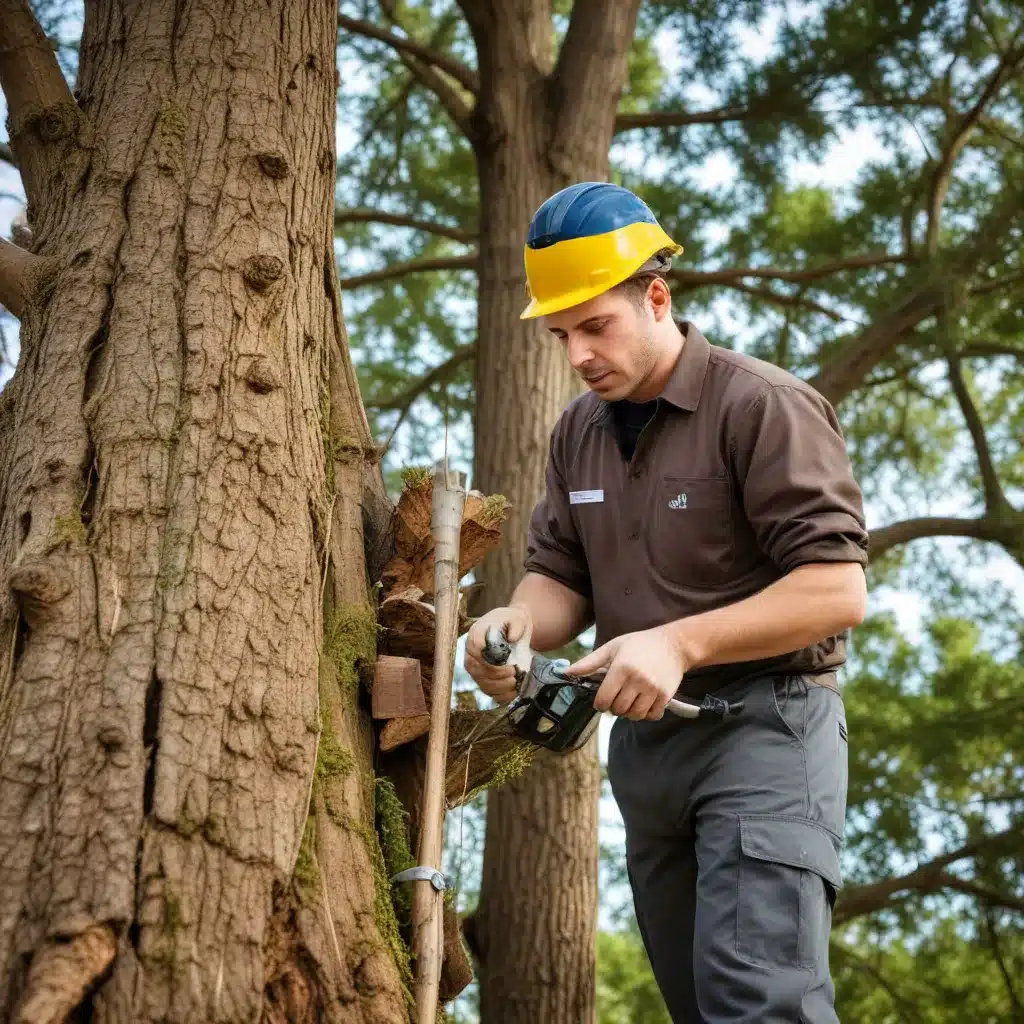
Tree care is a nuanced and complex field, requiring a deep understanding of plant biology, environmental factors, and the intricate interplay between these elements. At the heart of effective tree management lies the science of tree diagnostics – the systematic process of identifying the underlying causes of tree health issues. Embracing this science is crucial, as accurate diagnosis forms the foundation for targeted treatments, preventive measures, and ensuring the long-term vitality of trees.
Fundamentals of Tree Health
To appreciate the significance of professional tree diagnostics, it is essential to first grasp the basic anatomy and physiology of trees. Trees are living, dynamic organisms, with intricate vascular systems that transport water, nutrients, and essential compounds throughout their structure. Their health is influenced by a delicate balance of environmental conditions, such as soil quality, sunlight exposure, and climate.
Common tree diseases and disorders can stem from a variety of sources, including pathogenic fungi, bacteria, viruses, and pests, as well as environmental stressors like drought, nutrient deficiencies, and mechanical damage. Accurately identifying the root cause of a tree’s decline is paramount, as it determines the most appropriate course of action for restoration and preservation.
Diagnostic Tools and Techniques
Assessing the health of a tree requires a multifaceted approach, combining visual inspection, laboratory analysis, and advanced diagnostic methods. A trained arborist or tree care professional will begin by conducting a thorough visual examination, observing the tree’s overall appearance, foliage, and any visible signs of distress or disease.
Laboratory testing and analysis may then be employed to identify specific pathogens, nutrient imbalances, or other underlying issues. Techniques such as soil testing, tissue sampling, and DNA analysis can provide invaluable insights that guide the development of targeted treatment plans.
In some cases, advanced diagnostic tools may be necessary to delve deeper into a tree’s condition. These can include ground-penetrating radar to assess root systems, infrared thermography to detect internal issues, and tree core sampling to analyze growth patterns and wood composition.
Importance of Professional Tree Diagnosis
Benefits of Accurate Diagnosis
Embracing the science of tree diagnostics offers a multitude of benefits, both for the trees themselves and for those responsible for their care. Accurate diagnosis ensures that treatments are tailored to the specific needs of the tree, maximizing the chances of a successful outcome. This, in turn, promotes tree longevity and preserves the aesthetic and environmental value they provide.
Preventive measures, such as proactive pest management or soil amendments, can also be implemented more effectively when the underlying causes of a tree’s decline are clearly identified. This proactive approach not only safeguards the health of individual trees but can also help to mitigate the spread of diseases within a landscape or community.
Risks of Misdiagnosis
The consequences of misdiagnosis can be severe, often leading to ineffective or even counterproductive treatments, further compromising the tree’s health. In some cases, unnecessary tree removal may occur, resulting in the loss of valuable urban canopy and the associated environmental and aesthetic benefits.
Inaccurate diagnosis can also contribute to the proliferation of tree diseases, as untreated or improperly treated trees can serve as reservoirs for pathogens. This can have far-reaching consequences, impacting the overall health and resilience of the local tree population.
Application of Tree Diagnostics
Commercial and Municipal Settings
In commercial and municipal settings, such as landscape management and urban forestry, professional tree diagnostics play a critical role. Arborists and tree care specialists are tasked with maintaining the health and longevity of trees in public spaces, parks, and corporate landscapes. Accurate diagnosis allows for targeted treatments and proactive management, ensuring that these valuable assets continue to provide their many benefits to the community.
Residential and Homeowner Contexts
Even in residential and homeowner contexts, the importance of professional tree diagnostics cannot be overstated. Backyard trees and ornamental plantings are cherished elements of a home’s landscape, and their well-being is often a priority for homeowners. By enlisting the expertise of trained tree care professionals, homeowners can safeguard the health and beauty of their trees, while also avoiding the potential risks associated with misdiagnosis.
The Science behind Tree Diagnostics
Advancements in Tree Science
The field of tree science is constantly evolving, with ongoing research and advancements in the understanding of tree physiology, pathology, and environmental interactions. Innovations in pathogen identification and environmental stress analysis have significantly enhanced the accuracy and effectiveness of tree diagnostics.
Role of Arborists and Tree Care Professionals
At the heart of professional tree diagnostics are the skilled arborists and tree care specialists who have dedicated their careers to understanding the complexities of tree health. These professionals undergo extensive training, stay abreast of the latest scientific developments, and employ a wide range of diagnostic techniques to provide accurate assessments and tailored treatments.
Continuous education and professional development are essential for tree care professionals, as they navigate the ever-changing landscape of tree science and adapt their practices accordingly. By embracing this scientific approach, they can ensure that the trees under their care thrive and continue to enrich the environments they occupy.
By embracing the science of tree diagnostics, tree care professionals and homeowners alike can safeguard the health and longevity of trees, ensuring that these invaluable living assets continue to provide their myriad benefits for generations to come. To learn more about professional tree care services, visit TriCounty Tree Care.


